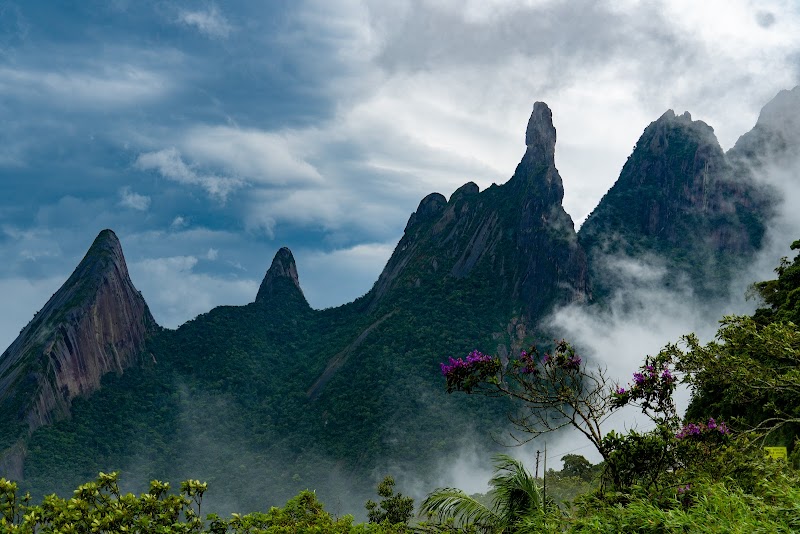
Festa de Santa Maria Madalena: A Vibrant Patron Saint Festival in Rio’s Rustic Heart
Every July, the small town of Santa Maria Madalena in Rio de Janeiro bursts with color and tradition during its Patron Saint Festival. From sacred processions to lively music and rustic trails nearby, the festival offers a unique blend of cultural immersion and outdoor exploration.
Start Early to Beat Afternoon Heat
Morning temperatures are cooler and trails are quieter, giving you a safer, more enjoyable hike before the intense midday sun sets in.
Hydrate Before and During Your Hike
The humid climate can sneak up on you; carry at least 2 liters of water and sip regularly to avoid fatigue and heat exhaustion.
Wear Sturdy Hiking Footwear
Trail surfaces vary from rocky to uneven forest paths, so good ankle support and grippy soles will protect you from slips and twists.
Carry Local Currency
Many festival vendors and small town shops don’t accept cards; having cash on hand ensures you can enjoy food, souvenirs, and transportation without hassle.
Festa de Santa Maria Madalena: A Vibrant Patron Saint Festival in Rio’s Rustic Heart
Every July, Santa Maria Madalena, a small town in Rio de Janeiro’s verdant interior, shifts into a lively rhythm for its Patron Saint Festival—Festa de Santa Maria Madalena. It’s more than a religious event; it’s a communal pulse that energizes the streets with tradition, color, and fervor. As the town honors its namesake saint, visitors are drawn in by the tangible blend of sacred ceremony, spirited music, and rustic charm.
The festival unfolds along narrow, cobbled streets shaded by old trees, where locals and visitors mingle under a sky that often hangs low and humid in winter’s relative cool. By day, processions thread through the town; by night, the festivities cascade into open-air dances and fireworks that dare the night to remain silent. The sound of traditional brass bands competes playfully with laughter, and aromas of freshly grilled meats and sweet local treats lure hungry festivalgoers.
Planning your visit means syncing with the pulse of the event. Arrive early in July, preferably midweek, to catch quieter moments of the festival – like the contemplative mass and the slow-moving procession through town’s core. Weekends bring more crowds and live music, making for a different pace and dynamic.
Santa Maria Madalena itself offers more beyond the festival—rolling hills and forested trails that invite exploration. While the town’s compact size means accommodations are modest, the nearby city of Campos dos Goytacazes offers reliable lodging and transport options.
For those drawn to outdoor adventure, a hike to Pico do Cruzeiro nearby serves as a perfect complement to the cultural immersion. The trail covers approximately 7 kilometers round trip with a 450-meter elevation gain, moving through forests that breathe quietly and rocky outcrops that command panoramic views of the valley. Early morning hikes catch the forest awakening, its cool air pushing you forward along paths edged with ferns and wild orchids. Prepare for uneven terrain that demands sturdy footwear and bring water; local springs may tempt but can be deceptive in their flow.
Whether soaking in festival energy or trekking into the wild hills, respect the city’s rhythms and landscapes. The Festa de Santa Maria Madalena invites you to engage with a community fiercely proud of its roots and landscape—offering both a celebration of heritage and an invitation to discovery.
Practical advice: book accommodations well ahead for July; carry cash as card services can be limited; wear layers to adjust to shifting temperatures. With these tips, the festival becomes not only a spectacle to witness but an experience to embrace fully.
Nearby Trips
All Adventures
Boat Charters
Water Activities
Adventures near Santa Maria Madalena, Rio de Janeiro
Discover the unique and memorable adventures that make Santa Maria Madalena, Rio de Janeiro special.
Frequently Asked Questions
What is the significance of the Festa de Santa Maria Madalena?
The festival honors Saint Mary Magdalene, the patron saint of the town. It blends religious rites with local culture, marking a crucial annual expression of communal identity and faith.
How crowded does Santa Maria Madalena get during the festival?
While smaller than major Brazilian festivals, July draws a significant local and regional crowd, especially on weekends. Arriving early can help avoid throngs and secure accommodations.
Are there any lesser-known viewpoints near Santa Maria Madalena?
Yes, Mirante da Pedra Alta offers stunning vantage points over the valley and town with far fewer visitors than Pico do Cruzeiro, perfect for quiet contemplation or photography.
What wildlife might I encounter on hikes nearby?
Expect to see toucans, howler monkeys, and a variety of colorful butterflies. The forest acts with a quiet presence, watching visitors with wary eyes.
How can I best respect local traditions during the festival?
Participate respectfully, observe processions quietly, ask permission before photographing people, and support local vendors rather than large chains.
Is the trail to Pico do Cruzeiro suitable for beginners?
The trail is moderate—not technically difficult but demanding enough to require steady pacing and appropriate footwear. Beginners with basic fitness can manage it with care.
Recommended Gear
Sturdy Hiking Boots
Provides support and grip on rocky and forested paths, reducing risk of injury.
Reusable Water Bottle
Hydration is critical in humid, sometimes hot conditions, and water points are scarce on the trails.
Light Waterproof Jacket
Sudden showers are common; a packable rain jacket keeps you dry without bulk.
Portable Phone Charger
Useful for navigation and emergencies, given the limited infrastructure and sporadic signal.
Local Insights
Hidden Gems
- "Mirante da Pedra Alta – a quiet viewpoint overlooking the valley"
- "Hidden forest springs along trails outside the main paths"
Wildlife
- "Howler monkeys"
- "Toucans"
- "Colorful butterfly species"
History
"Santa Maria Madalena grew around colonial sugarcane plantations, and the festival reflects strong Catholic roots blended with local customs."
